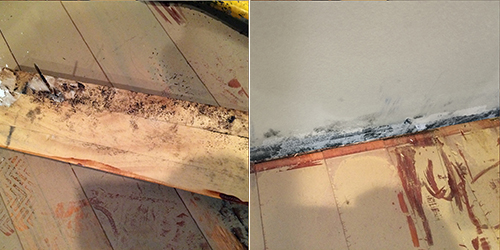Preventing Water Damage in the Bathroom
Preventing Water Damage in the Bathroom
Blog Article
The article author is making a few great points on How to Prevent Bathroom Water Damage as a whole in this great article following next.

The shower room is very at risk for wet accumulation and potential water damage due to the frequent use of water in it. This short article provides basic assessment strategies to aid identifying water damages threats.
The constant use water in the washroom makes it exceptionally at risk for wet buildup and also possible water damages. By checking it on a regular basis, you can minimize water associated damages.
The following set of inspections is easy to perform and also need to be done as soon as in every 3 months in order to keep your restroom in good shape and to stop possible water problems triggered by the tub, the shower, pipe joints and plumbing, sinks, closets, and also the bathroom
Do not overlook performing these examinations and also be extensive while performing them. Remember that these straightforward assessments can save you a great deal of cash by providing very early indicators for water damage
Sinks and also Cabinets
Sinks and closets are subjected to moisture and also humidity day-to-day as well as are often neglected. Evaluate frequently under the sink and on the kitchen counter above it. Fix any drip in the catch as it may recommend drain troubles. Take a look around the sink, slow-moving draining pipes may show a blocked drainpipe. Replace sink seals if they are split or loose.
Bath tub and Shower
The shower as well as bathtub need unique interest and also maintenance. Examine the tiles as well as replace if broken. See to it that there is no missing cement in between the ceramic tiles. Evaluate and change cracked caulking at joints where the walls fulfill the floor or the tub. Obstructed drains and also pipes troubles will protect against the bathtub from drying out and might indicate severe problems beneath the tub. Consult with an expert immediately to prevent architectural damage. Take notice of discolorations or soft locations around the bathtub wall surfaces as they might suggest an inner leakage.
Plumbing
Signs for water damages are tough to spot considering that the majority of pipes are mounted inside the wall surfaces.
Pay unique interest to floor covering and also walls moisture as well as spots as they might show an unnoticeable plumbing problem. Check wetness degrees in adjacent areas too.
The Commode
The toilet is a susceptible water junction. Inspect the water lines as well as look for leakages around the commode seat, in the tube, and under the water tank. If you discover any type of indications of dampness on the flooring around the commode, look for leakages in the toilet rim and also container seals.
Realize that hanging toilet bowl deodorants boosts the opportunities for clogs.
TIPS TO PREVENT WATER DAMAGE IN THE BATHROOM
The average household uses approximately 80-100 gallons of water per person per day. For a family of 4, that's almost 2,500 gallons of water a week! The largest portion of this consumption comes from bathroom use. Flushing the toilet uses the most water, followed by taking a shower or bath. With that much water running through the home, water damage in the bathroom is bound to happen. Knowing how to spot signs of a water leak is essential to preventing long-term damage. This guide provides you with tips to reduce the impact of water damage on your bathroom.
CAUSES OF BATHROOM WATER DAMAGE
Pipe breaks are the most common cause of water damage we see in our daily jobs. The age of a pipe plays a large role in a pipe break as well as corrosion. Over time, the metal begins to break down, allowing water to escape. Frozen pipe breaks are also a concern in the winter months. Toilet overflows caused by paper products or children flushing inappropriate items. Degraded caulking around the toilet or bathtub can allow water seepage, sometimes behind the fixture, into the subfloor or walls. Condensation forms when the water in a pipe is cooler than the air temperature. Beads of water form on the exterior of the pipes, sometimes so much so that the water begins to drip and pool below. Sink or shower backups created by poor drainage. HOW TO PREVENT WATER DAMAGE IN YOUR BATHROOM
Inspect your toilet supply line for worn or frayed hoses and replace them as needed. Winterize your plumbing to prevent a frozen pipe break. Use vent fans to prevent condensation that can lead to mold growth. Routinely check and replace degraded caulking around your toilet or bathtub. Increase the temperature in your toilet tank and insulate your pipes during the warm summer months to keep condensation from forming. Use child safety locks on the toilets. Flush only toilet paper. "Flushable" wet wipes are actually not good for your plumbing system. Additionally, feminine hygiene products should not be flushed. Prevent water from escaping the tub or shower. Make sure shower curtains are in good condition. Inspect shower doors and replace the seal strip if necessary. Wipe up any water that accumulates on the floor and use bath mats. Water left to sit can cause damage to the tiles and flooring. Refrain from using bath products containing heavy oils to avoid a clogged drain.

Do you like more info about Looking for Signs of Water Damage in the Bathroom? Post feedback down the page. We'd be delighted to listen to your ideas about this posting. In hopes that you come back again soon. Do you know about somebody who is excited about the subject? Please feel free to share it. I praise you for your time. Kindly stop by our website back soon.
Top Article Report this page